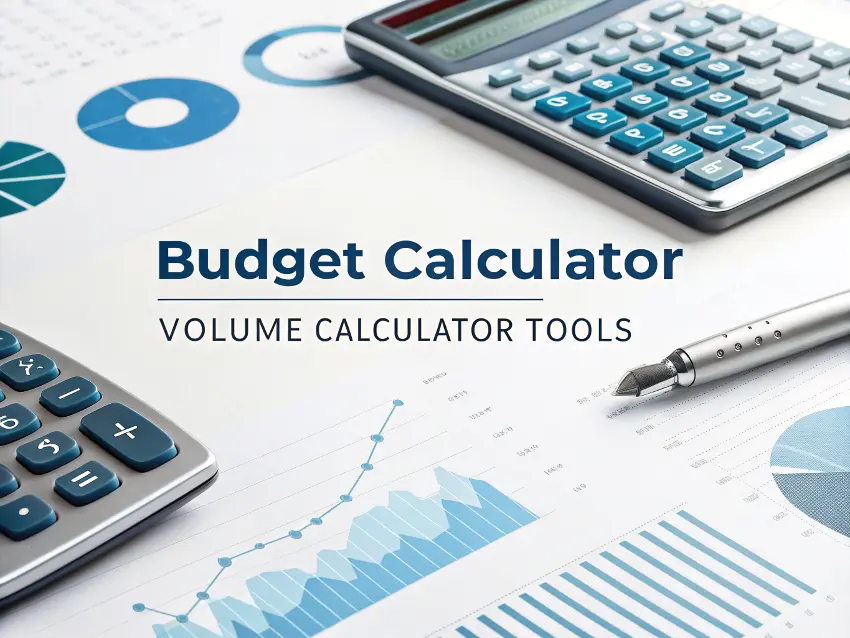Budget Calculator
Create a personalized budget based on your income and expenses

Personal Budget Planner
How Budgeting Works:
A budget is a financial plan that allocates your income to various expense categories. It helps you track spending, reduce unnecessary expenses, and save for your goals.
Creating a budget involves understanding your income, tracking your expenses, and making conscious decisions about where to allocate your money.
The 50/30/20 rule is a popular budgeting method that recommends allocating 50% of your income to needs, 30% to wants, and 20% to savings and debt repayment.
Budget Categories:
Needs (50%)
Essential expenses that you can't live without: housing, groceries, utilities, transportation, insurance, and minimum debt payments.
Wants (30%)
Non-essential expenses that enhance your lifestyle: dining out, entertainment, subscriptions, hobbies, and travel.
Savings (20%)
Money set aside for the future: emergency fund, retirement accounts, investments, and extra debt payments.
Budget Health Indicators
- Balanced Budget: Your expenses are less than your income, and you have a surplus for savings or extra debt payments.
- Breakeven Budget: Your expenses equal your income with little to no surplus, leaving you vulnerable to unexpected expenses.
- Deficit Budget: Your expenses exceed your income, which may lead to debt accumulation and financial stress.
Create Your Budget
Your Income
$
Annual: $48,000.00After tax: ~$3,000.00 /month
Budget Categories
| Category | Amount | % of Income | Actions |
|---|---|---|---|
$ | % | ||
$ | % | ||
$ | % | ||
$ | % | ||
$ | % | ||
$ | % | ||
$ | % | ||
$ | % | ||
$ | % | ||
| Total | $0.00 | 0.00% |
Budget Summary
Monthly Income:
$4,000.00
Total Budgeted:
$0.00
Monthly Surplus/Deficit:
$0.00
Budgeted Percentage:
0.00%
Budget Allocation
Great job! Your budget is balanced with a monthly surplus of $0.00.
50/30/20 Rule Analysis: Based on your current budget allocation, you're spending 0% on needs (recommended: 50%), 0% on wants (recommended: 30%), and 0% on savings (recommended: 20%).
Budgeting Tips & Strategies
Practical Budgeting Methods
50/30/20 Rule
Allocate 50% to needs, 30% to wants, and 20% to savings and debt repayment. Simple and flexible for most incomes.
Zero-Based Budgeting
Give every dollar a purpose until your income minus expenses equals zero. Great for detailed control.
Envelope System
Allocate cash to different envelopes for different expense categories. Effective for controlling spending.
Pay Yourself First
Set aside savings immediately when you get paid, then budget the rest. Prioritizes long-term goals.
Money-Saving Ideas
- Automate savings by setting up automatic transfers to your savings account on payday.
- Meal plan and cook at home to reduce food expenses and minimize waste.
- Use the 24-hour rule for non-essential purchases over $50 to avoid impulse buying.
- Cut subscription services you don't use regularly or that don't add significant value.
- Negotiate bills like internet, phone, and insurance for better rates.
- Use cashback apps and credit cards wisely to earn money on purchases you'd make anyway.
- Buy used or refurbished for furniture, electronics, and other durable goods.
- Practice mindful spending by asking if purchases align with your values and goals.
Common Budgeting Pitfalls
- Underestimating expenses: Track your spending for a few months to get accurate figures.
- Forgetting irregular expenses: Include annual or quarterly bills in your monthly budget.
- Making an unrealistic budget: Start with small changes rather than drastic cuts.
- Not updating your budget: Review and adjust regularly as your income or expenses change.
- Ignoring emergency savings: Build an emergency fund to avoid derailing your budget with unexpected expenses.
Recommended Savings Goals
| Goal | Target | Priority |
|---|---|---|
| Emergency Fund | 3-6 months of expenses | High |
| Retirement | 15-20% of income | High |
| Debt Repayment | Varies by debt load | High |
| Major Purchases | Set specific targets | Medium |
| Education | Based on estimated costs | Medium |